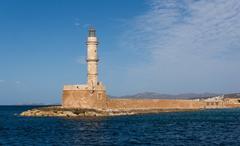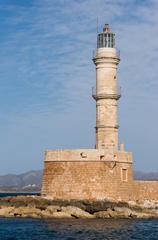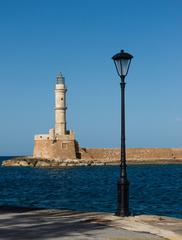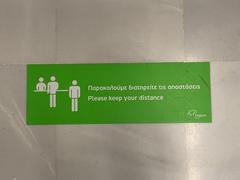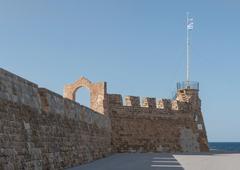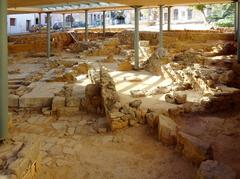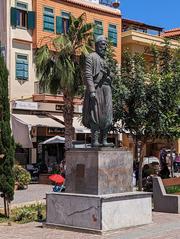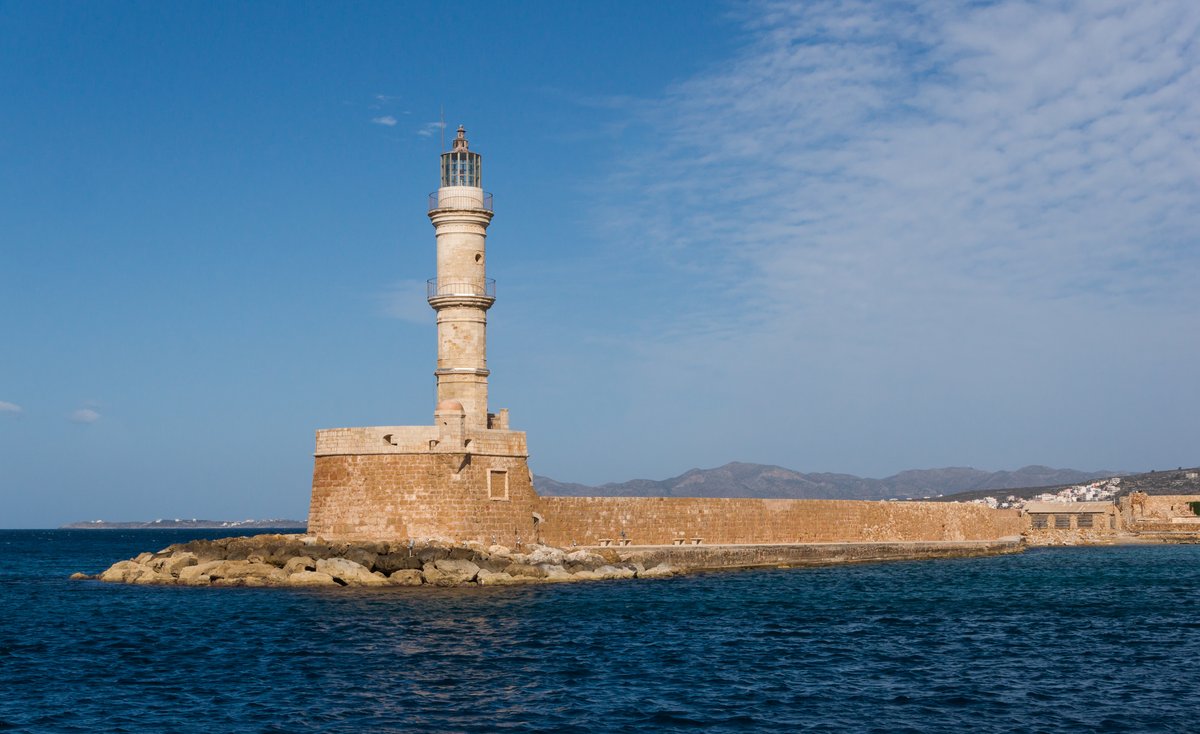
Visiting Guide for Phare de la Canée in Chania, Greece
Date: 19/07/2024
Introduction
The Phare de la Canée, also known as the Chania Lighthouse, is one of Crete’s most iconic landmarks. Situated at the entrance of the Venetian Harbor in Chania, this historical structure is a blend of various architectural styles that reflect the island’s rich and diverse past. Originally built by the Venetians in the late 16th century, the lighthouse has undergone numerous modifications by the Ottomans and Egyptians, making it a unique testament to the region’s multifaceted history (Chania Lighthouse History).
The lighthouse not only serves as a crucial navigational aid but also stands as a symbol of Chania’s enduring maritime heritage. Its architectural significance, characterized by a mix of Venetian, Ottoman, and Egyptian elements, draws visitors from around the world who come to marvel at its beauty and historical importance. Whether you’re a history enthusiast, an architecture aficionado, or simply looking for a picturesque spot to enjoy the sunset, the Phare de la Canée offers something for everyone (Ottoman Influence on Chania).
This comprehensive guide aims to provide you with all the necessary information for visiting the Phare de la Canée, including its history, visiting hours, ticket prices, and nearby attractions. By the end of this guide, you’ll have a deeper appreciation for this remarkable monument and be well-prepared to explore it during your visit to Chania.
Table of Contents
- Introduction
- History of Phare de la Canée
- Visitor Information
- Nearby Attractions and Accessibility
- Architectural Significance
- Cultural and Historical Impact
- Preservation and Modern Use
- Frequently Asked Questions (FAQ)
- Conclusion
History of Phare de la Canée
Origins and Early Construction
The Phare de la Canée, one of the oldest lighthouses in the world, dates back to the Venetian period. Constructed in the late 16th century by the Venetians who ruled Crete from 1204 to 1669, it was a crucial guide for ships navigating the treacherous waters of the Mediterranean (Chania Lighthouse History).
Ottoman Era Modifications
Following the fall of Crete to the Ottoman Empire in 1669, the lighthouse was rebuilt in 1839 with a distinctive minaret-like design, reflecting Ottoman architectural influences. This era also saw the addition of a mosque within the lighthouse complex (Ottoman Influence on Chania).
Egyptian Administration and Further Enhancements
In the mid-19th century, under Egyptian administration, the lighthouse saw extensive renovations aimed at modernizing it. These included a new lantern and reinforcement of the tower structure, improving maritime safety and supporting trade routes between Europe, Africa, and Asia (Egyptian Administration of Crete).
20th Century and Restoration Efforts
The early 20th century was tumultuous for Crete, but the lighthouse remained a vital navigational aid. Restoration projects in the latter half of the century aimed to preserve its historical and architectural integrity while incorporating modern technologies (Chania Lighthouse Restoration).
Visitor Information
Visiting Hours and Tickets
The Phare de la Canée is open to visitors year-round, with extended hours during the summer months. There is a nominal admission fee to enter the lighthouse complex. It’s advisable to check the official website or contact local tourist information centers for the most up-to-date visiting hours and ticket prices.
Travel Tips
- Best Time to Visit: Early morning or late afternoon to avoid crowds and enjoy the best lighting for photography.
- How to Get There: The lighthouse is accessible by foot from the Chania Old Town. Public transportation options are also available.
Nearby Attractions and Accessibility
The lighthouse is situated near several other historical sites and attractions in Chania, including the Maritime Museum of Crete and the Old Venetian Harbor. The area is generally accessible, but visitors with mobility issues should check for specific accessibility options.
Architectural Significance
The Phare de la Canée’s design is a fusion of Venetian, Ottoman, and Egyptian elements. The cylindrical tower, stone masonry, and intricate detailing are a testament to the craftsmanship of its various historical periods (Architectural Significance of Chania Lighthouse).
Cultural and Historical Impact
The lighthouse is a symbol of Chania’s rich maritime heritage, having witnessed the ebb and flow of various civilizations. Today, it draws visitors from around the world who come to marvel at its historical and architectural splendor (Cultural Impact of Chania Lighthouse).
Preservation and Modern Use
Maintained by the Hellenic Navy, the lighthouse continues to serve its original purpose while promoting cultural tourism in Chania. Modern navigational technologies have been integrated to ensure its continued functionality (Preservation Efforts).
Frequently Asked Questions (FAQ)
- What are the Phare de la Canée visiting hours? Visiting hours vary by season. Check the official website for current hours.
- How much are the tickets for Chania Lighthouse? Ticket prices are nominal and can be confirmed on the official website.
- Are guided tours available? Yes, guided tours are available and provide in-depth historical insights.
- Is the lighthouse accessible for people with disabilities? Accessibility options are available; check locally for specific details.
Conclusion
The Phare de la Canée stands as a beacon of Chania’s rich and diverse history. From its Venetian origins to its Ottoman and Egyptian modifications, the lighthouse encapsulates the cultural and historical evolution of the region. Visitors can appreciate its architectural beauty and gain a deeper understanding of the historical forces that have shaped this iconic structure. Plan your visit today to explore the Phare de la Canée and immerse yourself in Chania’s enduring maritime heritage (Chania Lighthouse Restoration).
For the latest updates and more information, download our mobile app, visit our related posts, or follow us on social media.
References
- Chania Lighthouse History, 2024, Explore Crete https://www.explorecrete.com/chania/EN-Chania-Lighthouse.html
- Ottoman Influence on Chania, 2024, Cretan Beaches https://www.cretanbeaches.com/en/lighthouses/chania-lighthouse
- Chania Lighthouse Restoration, 2024, Explore Crete https://www.explorecrete.com/chania/EN-Chania-Lighthouse.html
- Preservation Efforts, 2024, Cretan Beaches https://www.cretanbeaches.com/en/lighthouses/chania-lighthouse
